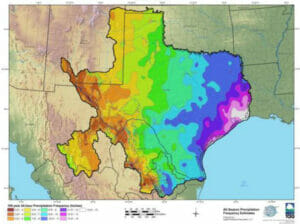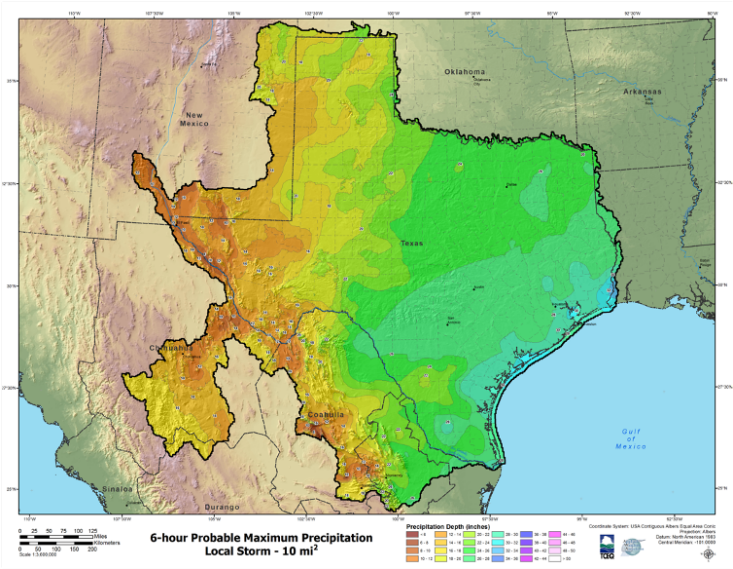Probable Maximum Precipitation depths were developed for the state of Texas and surrounding regions. This covered thousands of dams, many of which are classified as high hazard. PMP depths for durations from 1-hour through 120-hours and included storm specific temporal patterns. Precipitation frequency climatologies were developed as well across the entire domain as NOAA Atlas 14 was not available during the study period. Like most things in Texas, rainfall is bigger there too. This includes some of the largest rainfall events ever recorded in the US and each of these were analyzed in detailed with AWA’s SPAS program. All outputs were provided in a gridded database via AWA’s PMP tool.
In comparison to the NWS Hydrometeorological Reports 51 and 55A, the new study provides:
- Reproducible Results
- Gridded dataset within GIS platform relies on computer analysis versus human interpretation of contours
- Included 50 years of new data that resulted in including several new storms for analysis that were not accounted for in the HMRs
- PMP results island-wide
- Includes temporal distributions
- Includes gridded rainfall data for mode calibration
The new PMP estimates are available for the entire region, down to a single grid level. This information allows for hydrologic analyses to be completed for any location and for all durations.
When compared to previous PMP depths, the updated values from this study resulted in a wide range of reductions for most basin sizes and storm durations, with some regions resulting in minor increases. PMP depths are highest along the Balcones Escarpment and the Gulf Coast where Hurricane landfall affects the region. These spatial variations in PMP depth, match the general weather patterns of the region related to moisture availability, topography, and storm dynamics.
Data, assumptions, and analysis techniques used in this study have been reviewed and accepted by the by an independent board of reviewers, as well as study participants from the TCEQ, USACE, USGS, and NRCS.



































































